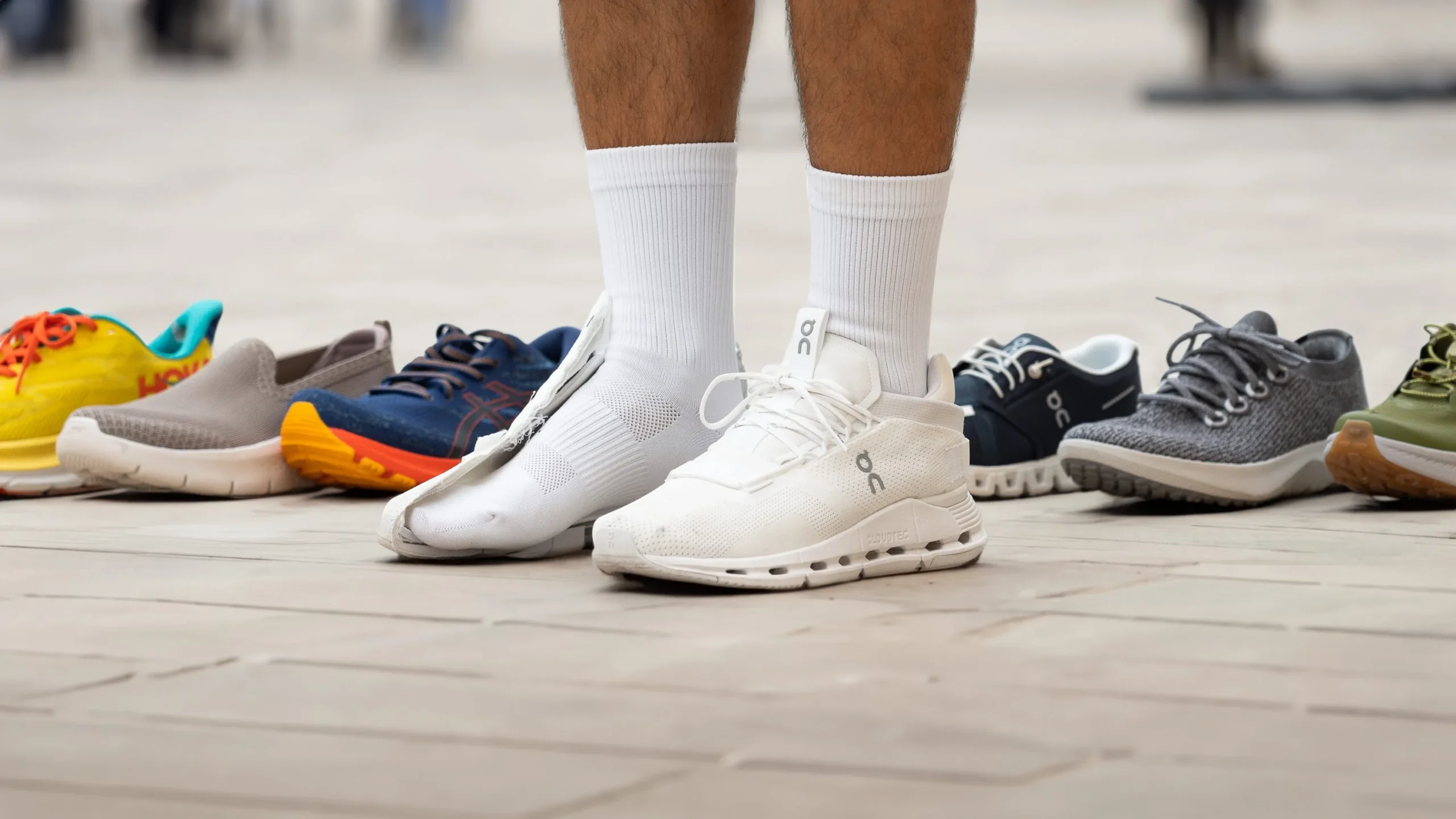Source: https://www.runnersworld.com/gear/a23554492/walking-shoes/
Navigating the world of walking trainers in the UK today is nothing like it was a decade ago. In my 15 years leading teams across sports retail and digital commerce, I’ve seen trends come and go, industry shakeups, and customer demands evolve faster than ever.
The reality is, the stakes are high—foot comfort and long-term health hinge on smart buying decisions. What most overlook is that selecting the best walking trainers isn’t just about style or price—it’s about performance, durability, and how well brands back their promises. What I’ve learned is you have to dig deeper than hype to find what works.
The Importance of Proper Fit
Here’s what nobody talks about: proper fit trumps every feature. In 2018, most sellers were obsessed with “memory foam” insoles, claiming they solved everything.
From a practical standpoint, that’s only half the story. When we shifted to analysing foot profiles—wide, narrow, high arch, flat—it changed our returns rate overnight.
The bottom line is, most companies see a 3-5% improvement in customer satisfaction by investing in fitting guidance. I once worked with a client who ignored this, leading to excessive refund requests and poor brand reputation. Lesson learned: a good walking trainer starts with a perfect fit.
Durability: What the Data Tells Us
Nobody wants trainers that fall apart after three months of British rain and cobblestone walks. Back during the last downturn, smart brands doubled down on reinforced stitching and harder-wearing soles. The data tells us that top walking trainers today typically last 15-18 months under regular UK conditions.
I’ve seen countless returns spike when manufacturers cut costs on materials. Look, quality costs—but the long-game wins. I advise peers to check honest reviews, warranty terms, and to question anything that sounds too good to be true. The reality is, durability equals value.
Comfort That Lasts All Day
Comfort is a major battleground. MBA programmes teach features sell trainers; in reality, long-term wear tells a different story. We tried launching a line focused on looks, but after six weeks, complaints piled up: “Great style, but my feet ache by lunchtime.”
Most B2B brands figured this out years ago—now they balance foam, mesh, and breathable linings for all-day support. From a practical standpoint, never settle for less than dual-density midsoles.
Everyone’s talking about “cloud” cushioning, but honestly, it’s the blend of support and breathability that makes the difference.
UK Brands vs. Imports: What Actually Works
During Brexit, many predicted UK-made trainers would dominate. But I’ve seen this play out—while some local brands have upped their game, imports still offer serious competition on price and tech. The 80/20 rule applies: 80% of innovation is still global. Here’s what works—buying from brands known for UK-specific sizing and environmental adaptation.
I once worked with a London runner who picked an imported pair, only to struggle with fit and sole grip on wet pavement. Now, local brands like New Balance UK and Hotter have grown by focusing on these details. But don’t rule out well-reviewed imports—they have their place.
Sustainability and Ethical Choices
The real question isn’t whether sustainability matters, but when buyers will prioritise it. Back in 2018, eco claims were rare; now, recycled materials and transparent sourcing are driving buying decisions.
I’ve advised on launching eco-lines, and here’s the hard truth: not all “sustainable” labels mean real impact. During our first attempt, we prioritised recycled fabric, but supply chain issues tanked our margins.
The lesson? Vet brands for authenticity—certifications, local partnerships, and clear recycling programmes. This works for most B2C buyers, though hardcore trekkers still want technical performance first. Choose trainers that balance ethical sourcing and durability.
Conclusion
Look, after years of analysing sales data, fielding customer complaints, and experiencing my own missteps, the best walking trainers to buy in the UK today are those that prioritise fit, comfort, durability, and genuine brand transparency.
The industry has shifted—what worked back in 2018 isn’t enough now. As a business leader, I always recommend blending real-world feedback with technical specs and never being swayed by empty marketing claims. Choose wisely, and your feet—and your wallet—will thank you.
What makes a walking trainer “the best” in the UK?
The best walking trainers fit perfectly, last through tough weather, and support your feet during long walks. Real-world reviews matter more than slick branding.
How often should you replace walking trainers?
Most people in the UK should replace their walking trainers every 15-18 months of regular wear. Signs like sole wear and reduced comfort mean it’s time for new ones.
Are UK brands better than imported trainers?
UK brands excel in local sizing and conditions, but top imports can offer advanced tech and value. It’s worth comparing features and reading local reviews.
What features should I look for for city walking?
Prioritise grip, breathable materials, and adequate arch support. UK pavements can be slippery—robust soles make a genuine difference.
Are sustainable walking trainers actually durable?
Sustainable trainers have improved, but always check for recognised certifications. The best ones balance eco-friendly materials with long-lasting construction.
Can I use running shoes for walking?
Running shoes can work for short walks, but walking trainers are built for slower, all-day use. You’ll get better support and less fatigue with purpose-built footwear.
How do I know what size to buy in UK trainers?
Consult the brand’s UK-specific size guide and, if possible, try on in-store. Reading feedback from fellow buyers in your area helps too.
What price range should I expect for quality trainers?
In the UK today, expect to pay between £45 and £120 for trusted walking trainers. Higher prices don’t always mean better fit—focus on reviews and comfort.
Are waterproof trainers really necessary?
If you walk frequently in wet British weather, waterproof trainers are worth considering. Otherwise, good breathability can be just as important.
What’s the biggest mistake buyers make with walking trainers?
The biggest mistake is prioritising style or price over proper fit and comfort. The wrong choice leads to discomfort, wasted money, and regret.

